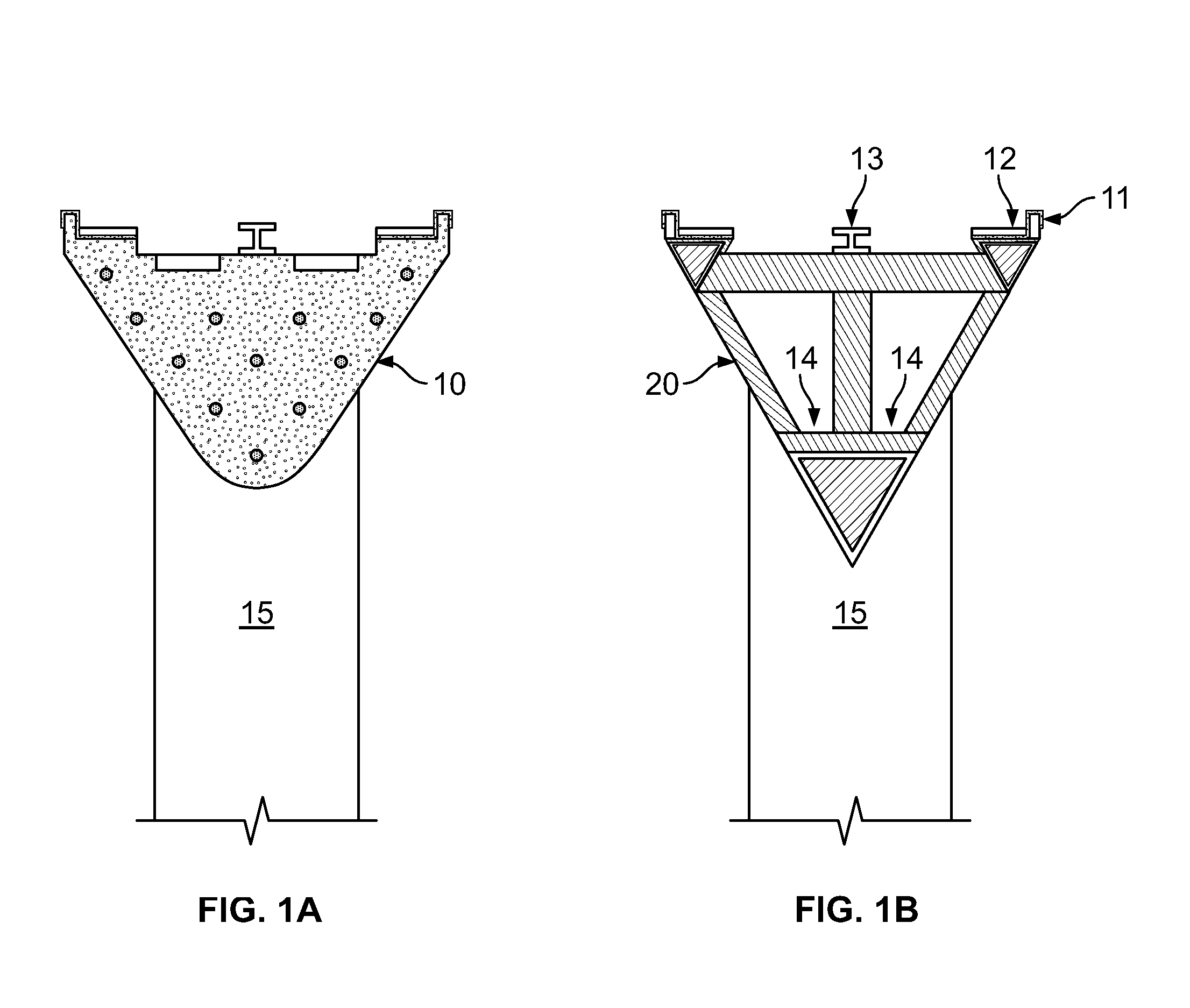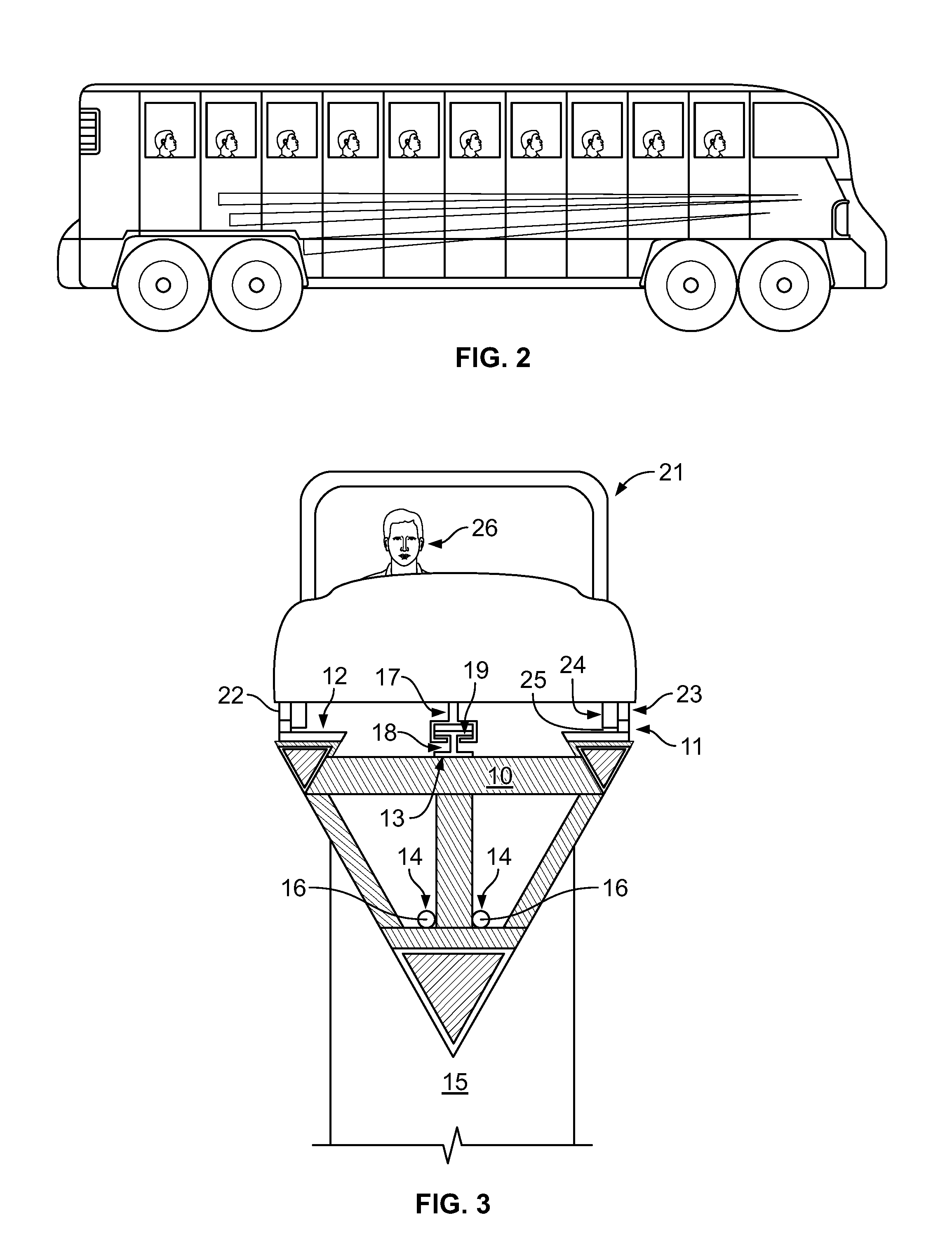Transitional Mode High Speed Rail Systems
a high-speed rail system and transitional mode technology, applied in the direction of rope railways, locomotives, roads, etc., can solve the problems of limited passenger transportation, inefficient trains, and serious limitations of current high-speed rail systems
- Summary
- Abstract
- Description
- Claims
- Application Information
AI Technical Summary
Benefits of technology
Problems solved by technology
Method used
Image
Examples
Embodiment Construction
[0043]The present disclosure relates to a transitional mode high speed rail system. The high speed rail infrastructure employed by the system is constructed adjacent a conventional host highway. The infrastructure can be provided adjacent to acceleration / deceleration lanes, or emergency parking / paved shoulder lanes. The various vehicles used by the system include individual, self-powered, self-operating, individual mass passenger transport vehicles similar in size and appearance to municipal buses. These are transitional mode vehicles because they operate as railroad vehicles on the high speed rail infrastructure, but transition to automotive vehicle mode traveling on ordinary paved roads. They are mass passenger transport vehicles because many passengers can be accommodated. Throughout this description these vehicles will be referred to simply as mass passenger transports (or “MPTs”). The various details of the present invention, and the manner in which they interrelate, will be de...
PUM
 Login to View More
Login to View More Abstract
Description
Claims
Application Information
 Login to View More
Login to View More - R&D
- Intellectual Property
- Life Sciences
- Materials
- Tech Scout
- Unparalleled Data Quality
- Higher Quality Content
- 60% Fewer Hallucinations
Browse by: Latest US Patents, China's latest patents, Technical Efficacy Thesaurus, Application Domain, Technology Topic, Popular Technical Reports.
© 2025 PatSnap. All rights reserved.Legal|Privacy policy|Modern Slavery Act Transparency Statement|Sitemap|About US| Contact US: help@patsnap.com



